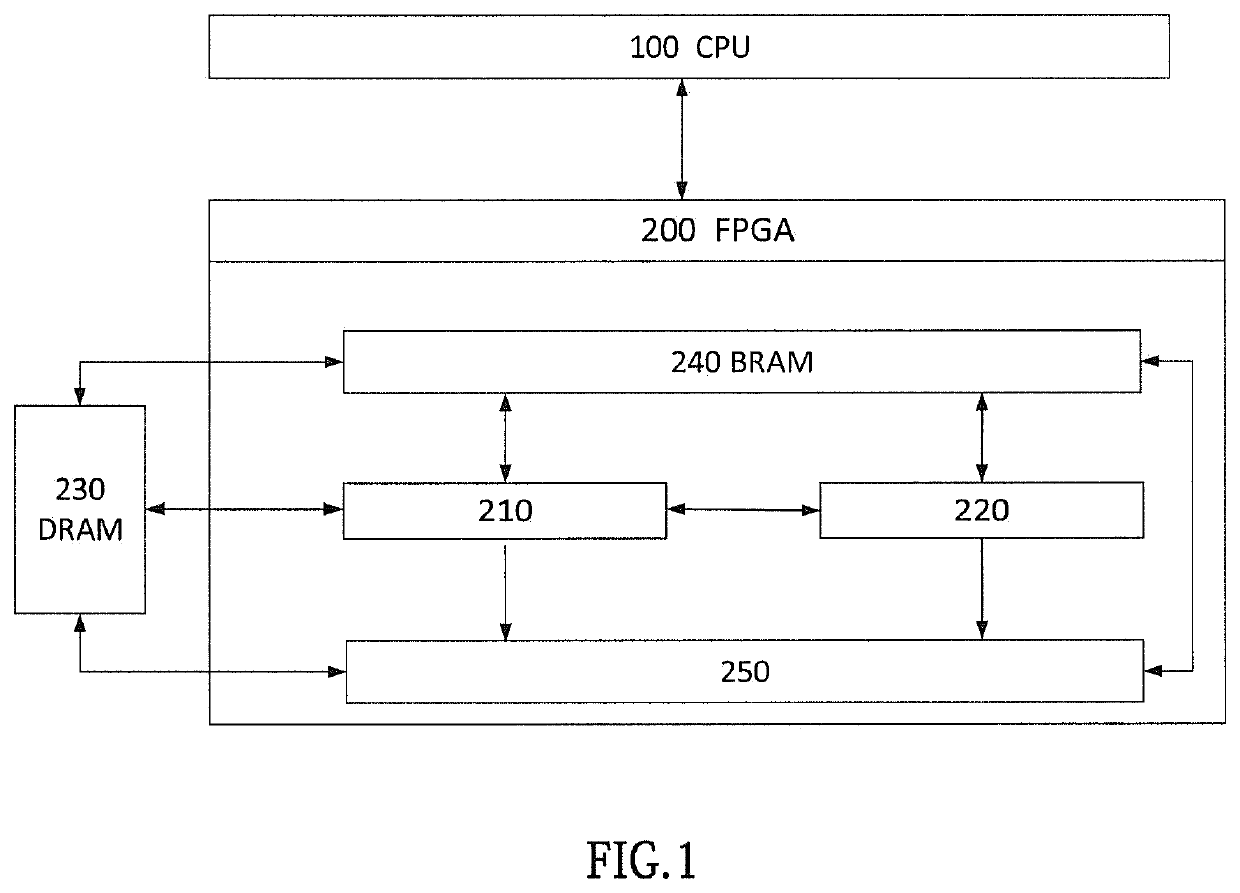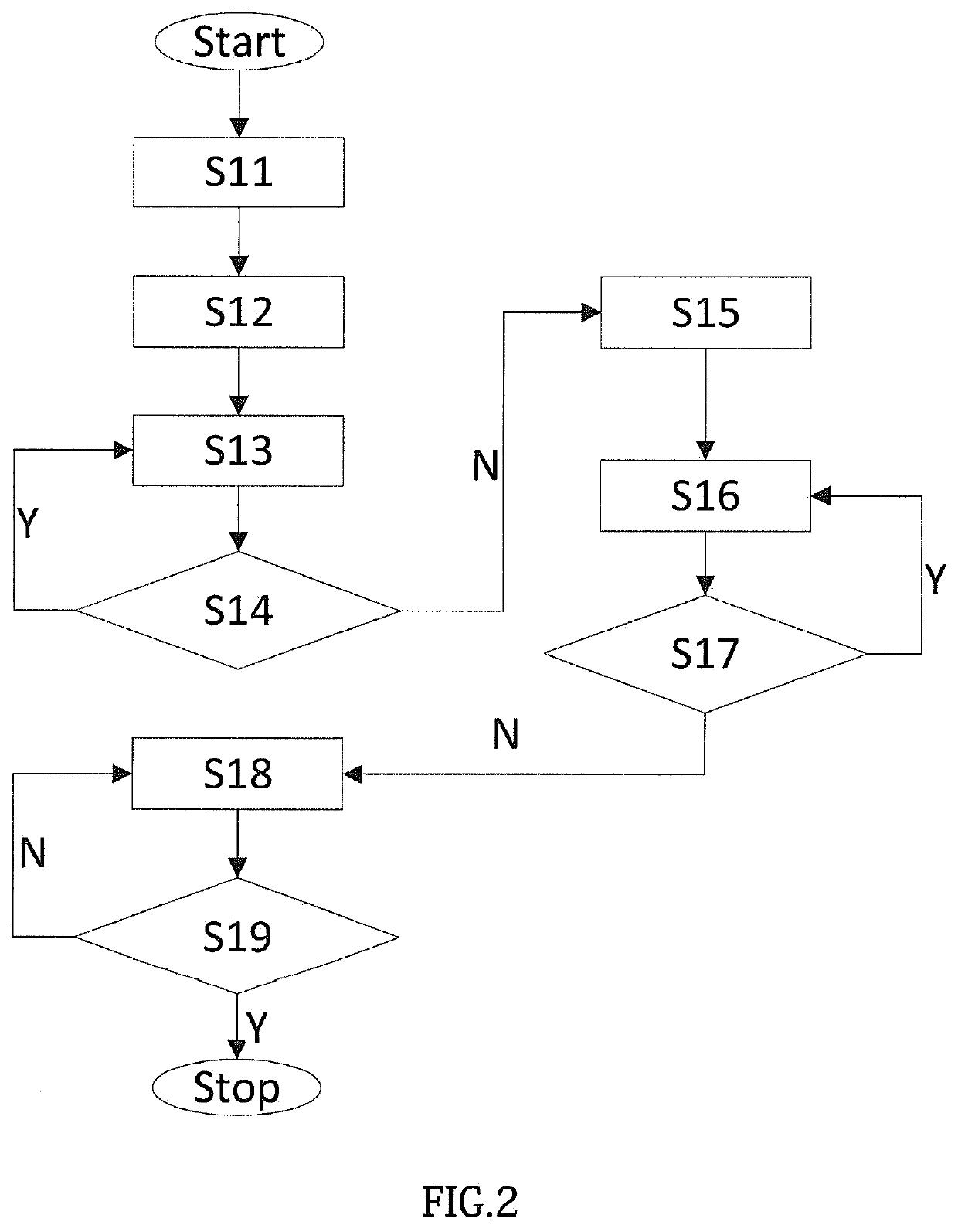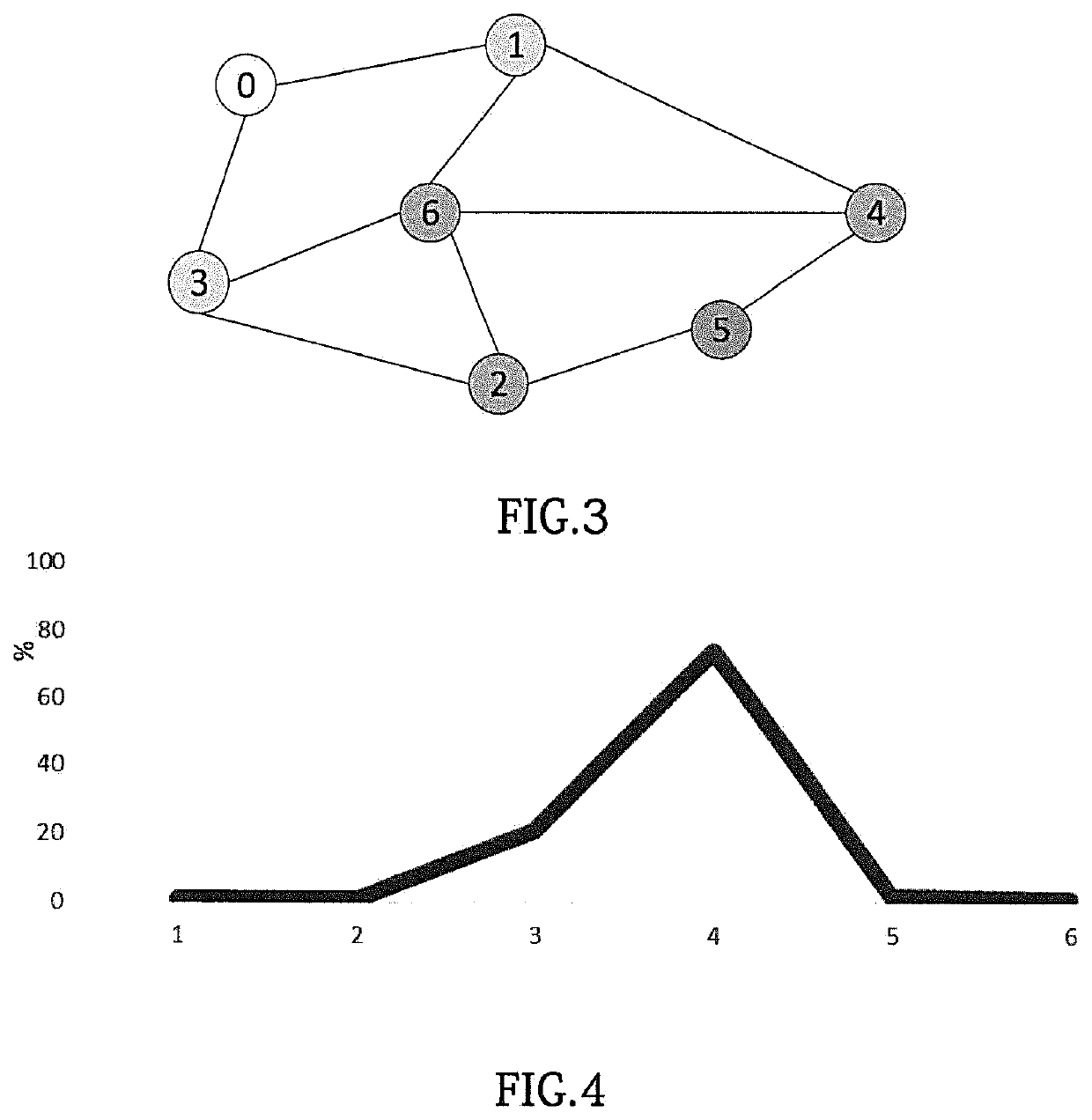Fpga-based graph data processing method and system thereof
a graph computing and graph data technology, applied in the field of field programmable gate array (fpga) graph computing, can solve the problems of large time consumption, heterogeneous cpu-fpga graph computing structure, and slow development of fpga-based graph computing, and achieve the effect of eliminating defects, reducing time consumption, and reducing processing costs
- Summary
- Abstract
- Description
- Claims
- Application Information
AI Technical Summary
Benefits of technology
Problems solved by technology
Method used
Image
Examples
Embodiment Construction
[0026]The following description, in conjunction with the accompanying drawings and some embodiments, is set forth as below to illustrate the present disclosure.
[0027]It is noted that, for easy understanding, like features bear similar labels in the attached figures as much as possible.
[0028]As used throughout this application, the term “may” is of permitted meaning (i.e., possibly) but not compulsory meaning (i.e., essentially). Similarly, the terms “comprising”, “including” and “consisting” mean “comprising but not limited to”.
[0029]The phrases “at least one”, “one or more” and “and / or” are for open expression and shall cover both connected and separate operations. For example, each of “at least one of A, B and C”, “at least one of A, B or C”, “one or more of A, B and C”, “A, B or C” and “A, B and / or C” may refer to A solely, B solely, C solely, A and B, A and C, B and C or A, B and C.
[0030]The term “a” or “an” article refers to one or more articles. As such, the terms “a” (or “an”...
PUM
 Login to View More
Login to View More Abstract
Description
Claims
Application Information
 Login to View More
Login to View More - R&D
- Intellectual Property
- Life Sciences
- Materials
- Tech Scout
- Unparalleled Data Quality
- Higher Quality Content
- 60% Fewer Hallucinations
Browse by: Latest US Patents, China's latest patents, Technical Efficacy Thesaurus, Application Domain, Technology Topic, Popular Technical Reports.
© 2025 PatSnap. All rights reserved.Legal|Privacy policy|Modern Slavery Act Transparency Statement|Sitemap|About US| Contact US: help@patsnap.com



